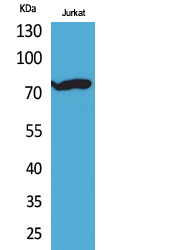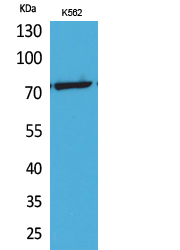
Catalog: KA1132C
Size
Price
Status
Qty.
96well
$470.00
In stock
0
Add to cart


Collected


Collect
Main Information
Reactivity
Human, Mouse
Applications
ELISA
Conjugate/Modification
Phospho
Detailed Information
Storage
2-8°C/6 months,Ship by ice bag
Modification
Phospho
Detection Method
Colorimetric
Related Products
Antigen&Target Information
Gene Name:
TP73
show all
Other Name:
Tumor protein p73 ;
p53-like transcription factor ;
p53-related protein ;
p53-like transcription factor ;
p53-related protein ;
show all
Background:
cofactor:Binds 1 zinc ion per subunit.,disease:Maps to a chromosome region frequently mutated in diverse cell lines of human cancer. Appears not to be frequently mutated in human cancers, in contrast to p53. Hemizygosity is observed in neuroblastoma and oligodendroglioma.,domain:Possesses an acidic transactivation domain, a central DNA binding domain and a C-terminal oligomerization domain that binds to the ABL tyrosine kinase SH3 domain.,domain:The WW-binding motif mediates interaction with WWOX.,function:Participates in the apoptotic response to DNA damage. Isoforms containing the transactivation domain are pro-apoptotic, isoforms lacking the domain are anti-apoptotic and block the function of p53 and transactivating p73 isoforms. May be a tumor suppressor protein.,induction:Not induced by DNA damage. Isoforms lacking the transactivation domain block gene induction.,miscellaneous:Activated and stabilized by interaction with RANBP9.,PTM:Isoform alpha (but not isoform beta) is sumoylated on Lys-627, which potentiates proteasomal degradation but does not affect transcriptional activity.,similarity:Belongs to the p53 family.,similarity:Contains 1 SAM (sterile alpha motif) domain.,subcellular location:Accumulates in the nucleus in response to DNA damage.,subunit:Found in a complex with p53/TP53 and CABLES1. The C-terminal oligomerization domain binds to the ABL tyrosine kinase SH3 domain. Interacts with HECW2. Isoform Beta interacts homotypically and with p53/TP53, whereas isoform Alpha does not. Isoform Gamma interacts homotypically and with all p73 isoforms. Isoform Delta interacts with isoform Gamma, isoform Alpha, and homotypically. Isoforms Alpha and Beta interact with HIPK2. Isoform Alpha interacts with RANBP9. Isoform Beta interacts with WWOX.,tissue specificity:Brain, kidney, placenta, colon, heart, liver, spleen, skeletal muscle, prostate, thymus and pancreas. Highly expressed in fetal tissue.,
show all
Function:
regulation of cell growth, release of cytochrome c from mitochondria, regulation of protein amino acid phosphorylation,response to tumor cell, DNA metabolic process, DNA repair, mismatch repair, transcription, regulation of transcription, DNA-dependent, negative regulation of protein kinase activity, apoptosis, induction of apoptosis, defense response,inflammatory response, response to DNA damage stimulus, mitochondrion organization, cell cycle, cell cycle arrest,intracellular signaling cascade, body fluid secretion, cell death, regulation of cell size, induction of apoptosis by intracellular signals, DNA damage response, signal transduction resulting in induction of apoptosis, apoptotic mitochondrial changes, response to wounding, post-embryonic development, positive regulation of biosynthetic process, positive regulation of macromolecule biosynthetic process, positive regulation of macromolecule metabolic process, regulation of protein kinase cascade, positive regulation of gene expression, regulation of cell death, positive regulation of cell death, programmed cell death, induction of programmed cell death, death, regulation of phosphate metabolic process, telencephalon development, pallium development, limbic system development, hippocampus development, cell cycle process, neuron differentiation, negative regulation of cell growth, forebrain development,positive regulation of cellular biosynthetic process, regulation of protein modification process, regulation of cellular protein metabolic process, regulation of cellular component size, cerebrospinal fluid secretion, cellular response to stress, negative regulation of kinase activity, regulation of growth, regulation of phosphorylation, DNA damage response, signal transduction, regulation of apoptosis, positive regulation of apoptosis, negative regulation of apoptosis, regulation of programmed cell death, positive regulation of programmed cell death, negative regulation of programmed cell death, negative regulation of catalytic activity, regulation of MAP kinase activity, negative regulation of MAP kinase activity, regulation of MAPKKK cascade, regulation of JUN kinase activity, negative regulation of JUN kinase activity, regulation of neuron apoptosis, negative regulation of neuron apoptosis, regulation of kinase activity,negative regulation of molecular function, regulation of transcription, negative regulation of cell size, positive regulation of cell size, regulation of protein kinase activity, positive regulation of transcription, DNA-dependent,negative regulation of growth, positive regulation of nucleobase, nucleoside, nucleotide and nucleic acid metabolic process, positive regulation of transcription, regulation of JNK cascade, secretion, digestive tract morphogenesis,neuron development, regulation of body fluid levels, positive regulation of nitrogen compound metabolic process,regulation of phosphorus metabolic process, regulation of RNA metabolic process, positive regulation of RNA metabolic process, regulation of transferase activity, negative regulation of transferase activity, digestive system development,negative regulation of cell death, regulation of stress-activated protein kinase signaling pathway, regulation of cellular response to stress,
show all
Cellular Localization:
Nucleus . Cytoplasm. Accumulates in the nucleus in response to DNA damage.
show all
Signaling Pathway
Reference Citation({{totalcount}})
Catalog: KA1132C
Size
Price
Status
Qty.
96well
$470.00
In stock
0
Add to cart


Collected


Collect
Recently Viewed Products
Clear allPRODUCTS
CUSTOMIZED
ABOUT US
Toggle night Mode
{{pinfoXq.title || ''}}
Catalog: {{pinfoXq.catalog || ''}}
Filter:
All
{{item.name}}
{{pinfo.title}}
-{{pinfo.catalog}}
Main Information
Target
{{pinfo.target}}
Reactivity
{{pinfo.react}}
Applications
{{pinfo.applicat}}
Conjugate/Modification
{{pinfo.coupling}}/{{pinfo.modific}}
MW (kDa)
{{pinfo.mwcalc}}
Host Species
{{pinfo.hostspec}}
Isotype
{{pinfo.isotype}}
Product {{index}}/{{pcount}}
Prev
Next
{{pvTitle}}
Scroll wheel zooms the picture
{{pvDescr}}









.jpg)









